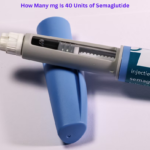Introduction: The Pain That Could Turn Deadly
We’ve all been guilty of ignoring a toothache at some point. Life gets busy, painkillers help, and the dentist can always wait. But here’s something we’ve seen too often — someone waits too long, and what started as a simple tooth infection becomes something serious, fast. That tiny pain? It could turn into a full-body emergency before you even realize it.
Here’s the hard truth: how long until a tooth infection kills you isn’t just a scary search term — it’s a real-life question with life-or-death consequences. And if you’re already feeling some discomfort or wondering whether your symptoms are severe, you’re in the right place.
In this article, we’ll break down the apparent warning signs, explain how long you actually have before things can turn dangerous, and, most importantly, what you need to do — right now — to stay safe and healthy.
How Long Does It Take for a Tooth Infection to Become Life-Threatening?
Tooth infections don’t kill overnight — but they can escalate quickly. The timeline depends on a few key things: your immune system, the severity of the disease, and how soon you get treatment. In most healthy adults, an untreated tooth infection can start causing serious complications within a few days to a week.
Here’s a rough breakdown of what might happen if you don’t act:
- 1–2 days: Local pain and sensitivity begin. It isn’t enjoyable but manageable.
- 3–5 days: Swelling increases. Pain may start to spread to the jaw, neck, or ear.
- 5–7 days: A dental abscess might form — this is a big red flag.
- After 7 days: If still untreated, the infection can spread to your bloodstream, lungs, or even your brain.
So, really — how long until a tooth infection kills you? In severe cases, it could be as little as 72 hours if the infection spreads to vital organs or causes sepsis.
That’s why acting early isn’t just smart — it can be life-saving.
5 Warning Signs of a Tooth Infection You Should Never Ignore
If you’re questioning whether your dental pain is severe, keep an eye out for these major red flags.
1. Throbbing Tooth Pain That Spreads
This isn’t your everyday cavity pain. When the ache radiates to your jaw, ear, or neck, it’s a sign that the infection may be moving beyond the tooth root.
You might also notice that lying down makes the pain worse — a hint that inflammation is affecting your surrounding tissue.
2. Swelling in the Face, Cheek, or Jaw
Facial swelling is one of the most apparent visual signs that your infection is out of control. It could make it difficult to eat, speak, or even breathe in some extreme cases.
Swelling combined with pain likely points to a pus-filled abscess. According to the Mayo Clinic, this kind of infection can turn dangerous quickly and may require emergency drainage or antibiotics.
3. Fever, Chills, or Fatigue
Fever doesn’t show up with minor dental issues — it’s a symptom that your body is fighting something big. If chills, sweating, or exhaustion accompany your tooth pain, don’t wait it out.
The Centers for Disease Control and Prevention warns that infections like this can lead to sepsis, a dangerous condition where the immune system spirals out of control.
4. Difficulty Swallowing or Breathing
If swelling reaches the throat, it can begin to obstruct your airway. That’s a true medical emergency.
You might feel like there’s pressure on your throat, notice your voice changing, or find it hard to breathe or swallow. In cases like this, it’s not about calling the dentist — it’s about getting to the ER.
5. Bad Taste or Smell in the Mouth
A persistent foul taste or odor can mean an abscess has ruptured and is draining into your mouth. It may offer temporary relief, but the infection is still active and dangerous.
Don’t mistake the draining pus for healing — it’s just a new phase of a worsening problem.
Can a Tooth Infection Kill You? Yes — Here’s How
It sounds dramatic, but yes, a tooth infection can kill you. Left untreated, it can spread bacteria throughout your body and damage your vital organs.
Here are the most dangerous outcomes:
- Sepsis: When your immune system overreacts and starts damaging healthy tissue.
- Ludwig’s Angina: A deep neck infection that can block the airway.
- Brain Abscess: Rare but possible — especially from upper tooth infections.
What’s scary is that these outcomes usually come from what looked like a minor issue at first. That’s why watching for early signs is key.
What Should You Do If You Suspect a Tooth Infection?
If you’re feeling any of the symptoms mentioned above, don’t wait. Here’s your immediate action plan:
1. Call Your Dentist Immediately
Even if you’re unsure how serious it is, don’t guess. Describe your symptoms and ask for the soonest available appointment. Most dental offices treat infection cases as urgent.
2. Avoid Taking Old Antibiotics
Old or leftover prescriptions won’t help — and they might make things worse. An infection like this needs specific antibiotics, taken in the correct dosage and for the full course.
Only take what your dentist prescribes after evaluating your condition.
3. Manage Pain Carefully
You can take ibuprofen or acetaminophen for temporary pain relief, but remember — that’s not a cure. Use them only to hold you over until your dental visit.
4. Go to the ER for Severe Symptoms
If you’re running a high fever, experiencing swelling that affects your throat or breathing, or have intense pain that’s spreading, don’t wait for a dental appointment. Head straight to the emergency room.
Conclusion: Don’t Wait for It to Get Worse
When it comes to tooth infections, time is of the essence. That little ache you’re ignoring could turn into something dangerous within days. The good news? Most serious infections are preventable with quick action.
Now that you know the truth behind how long it takes until a tooth infection kills you, you’re in a position to make a wise decision. And the best one is this: act early.
Let’s Keep You Safe — One Tooth at a Time
We care deeply about helping you stay safe, healthy, and pain-free. If something feels wrong, your body is telling you to take it seriously. Don’t guess — don’t delay.
If you’re feeling any of the signs we’ve listed here, reach out to your dentist, or if needed, visit urgent care or the ER. Fast action can mean the difference between a simple treatment and a medical emergency.
Stay ahead of it. Stay informed. Stay well.



